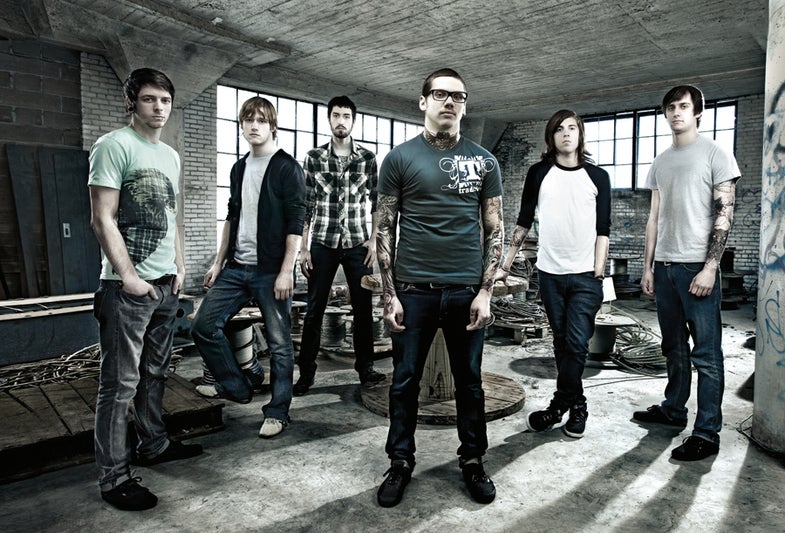How To Photograph A Rock Band
With so many rehearsals and shows these tips will keep your shoots in order.

Whether you’re into the music or just up for a challenge, shooting portraits of rock acts is a lot of fun. but don’t let anarchy rule: You have to control the location, pose, wardrobe, lighting, and (as in this photo of the Devil Wears Prada, a Christian heavy-metal band) color palette. Here are some strategies:
1. Find A Site.
The location helps define the group and its musical style. Grungy spaces-like this unheated warehouse in Dayton, OH, where the band practices-lend street cred. Look for high ceilings, lots of room, natural light, and visual power.
Get a shot of just the background-if anything stands out, remove it, keep it in shadow, or shift your camera to crop it out. A simple, monochrome background won’t upstage the band.
2. Plan Well.
Know the look you want, down to the positions of each band member. You have to make these guys look hot-and do it fast. They’ll get impatient if they think you’re winging it, so work from a plan and assert authority. Have other compositions ready in case your first one doesn’t fly.
3. Pose Each Person.
Just pivoting someone can make or break an image. Crashing, high-energy metal acts should look commanding-easy to do by squaring their shoulders and feet. Put space between them so that each has a distinct presence, but not so much that they don’t cohere as a group, and keep them from all facing the same direction.
My first step is to situate each musician and take test shots. Then I clear everyone out, study the tests, and show each person how and where to stand, referring to the test shots. I put a lead singer at center and close in, framed by the rest of the band.
4. Control The Wardrobe.
Rockers usually dress the part, but no one member of the group should stand out. If they aren’t wearing makeup, I have musicians smear on a little baby oil to make their skin glow.
5. Go A Little Low.
For a larger-than-life effect, put the camera at waist height and keep the imaging plane parallel to your subjects.
Photo By Adam Elmakias
6. Backlight.
This separates the figures from darker backgrounds and creates foreground shadows for a monolithic feel and structure. I use bare bulbs or grids for crisp shadows, with one light coming from back left and one from back right, raised to about 6 feet and aimed downward. If light spills onto their faces, or one musician casts a shadow on another, my assistants quickly move the lights or the people.
7. Work It In Postproduction.
I do a lot of dodging, burning, sharpening, and adjusting tones in Adobe Photoshop. For this photo, I dialed down both color temperature and vibrance for a cooler look.
Adam Elmakias, 19, from San Diego, has shot a heap of magazine covers. See more at www.adamelmakias.com.